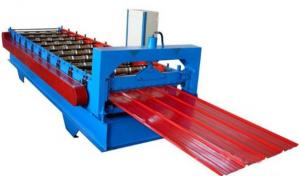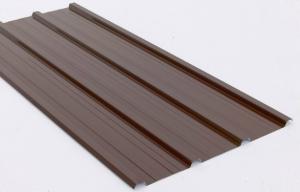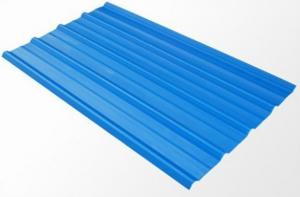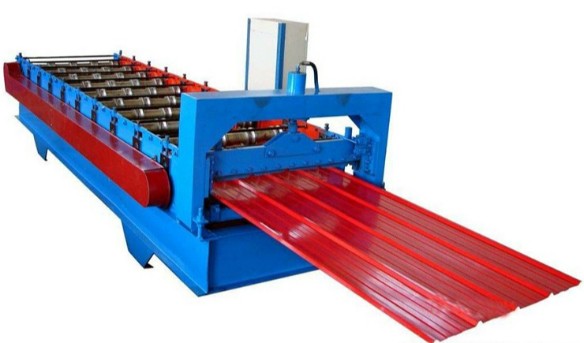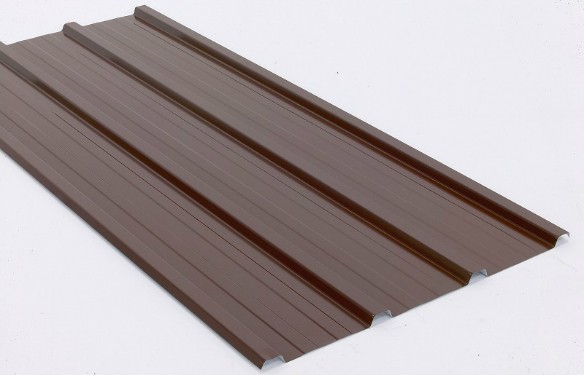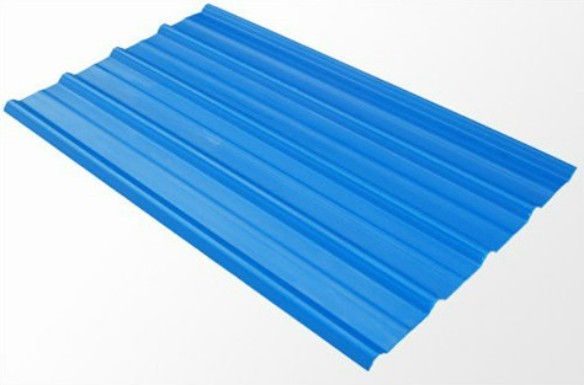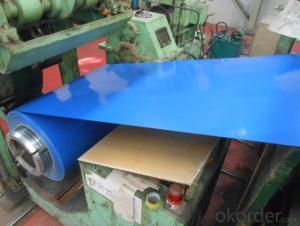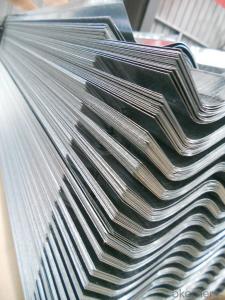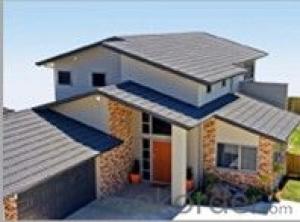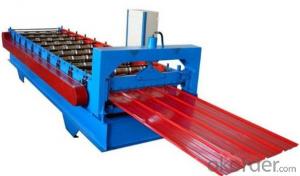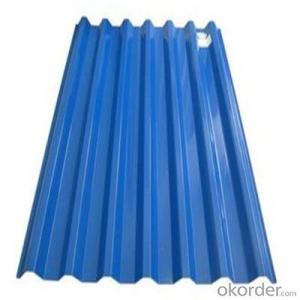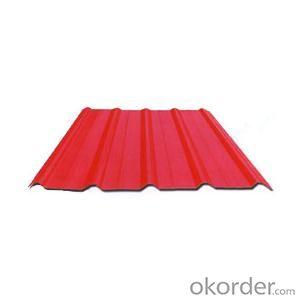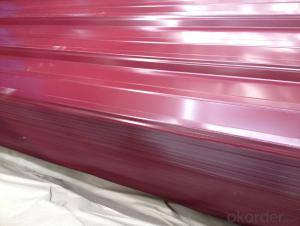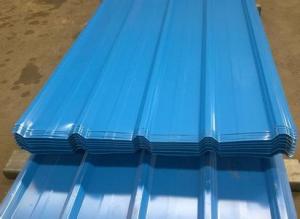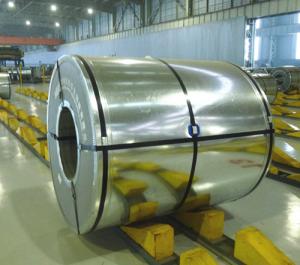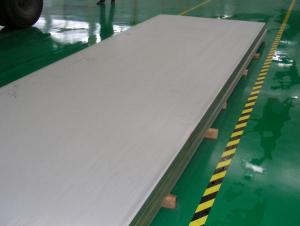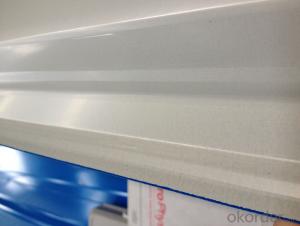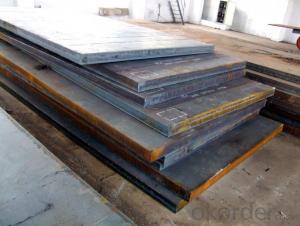Prepainted Galvanised Corrugated Sheet
- Loading Port:
- China Main Port
- Payment Terms:
- TT OR LC
- Min Order Qty:
- -
- Supply Capability:
- -
OKorder Service Pledge
OKorder Financial Service
You Might Also Like
Product Description:
We specialize in manufacturing galvanized steel coil, galvalume steel coil, prepainted steel coil and galvanized corrugated sheets.
Nowadays our company has grown up to a collectivized company . We are grateful to the cooperation partner who`s grown with us all the way. We hope we could make more friends from all over the world. Under the joint efforts of both sides we believe that we will continue to achieve win-win results based on mutual trust and mutual support.
Quick Details
| Standard: | Grade: | Thickness: | |||
| Place of Origin: | Brand Name: | Model Number: | |||
| Type: | Technique: | Surface Treatment: | |||
| Application: | Special Use: | Width: | |||
| Length: | Based Material: | Material: | |||
| Zinc Coated: | Spangle: | Shape: | |||
| Galvanized Type: | Business: | Payment Terms: | |||
| Packaging: | Delivery Detail: |
Packaging & Delivery
| Packaging Detail: | Fully seaworthy export packing with paper tube Each coil is wrapped in water-proof paper. |
| Delivery Detail: | about 15 days after the deposit if the quantity below 500 ton. |
Specifications
Corrugated gi/gl/ppgi Sheet
1.Thickness: 0.13mm-1.0mm
2.Width:750mm-1250mm
3. z40-z150g/m2
4.ISO 2000,SGS
- Q: How are steel sheets inspected for defects?
- Steel sheets are typically inspected for defects using various techniques such as visual inspection, non-destructive testing methods like ultrasonic testing, magnetic particle inspection, and eddy current testing. These methods help identify any surface or internal defects such as cracks, voids, or abnormalities that may affect the quality and performance of the steel sheets.
- Q: Can the steel sheets be used for roofing purposes?
- Indeed, steel sheets are suitable for roofing applications. Steel roofing sheets are favored because of their long-lasting nature, robustness, and ability to endure severe weather conditions. They offer superb safeguard against elements like rain, snow, and hail. Moreover, steel roofing sheets possess fire-resistant properties and can endure strong winds, rendering them a dependable choice for roofing needs. Furthermore, steel sheets are lightweight, facilitating easier installation and reducing strain on the structure. They come in diverse designs and colors, enabling customization to suit personal preferences. All in all, steel sheets are a versatile and pragmatic option for roofing purposes.
- Q: Can steel sheets be used for kitchen backsplashes?
- Yes, steel sheets can be used for kitchen backsplashes. Steel is a versatile and durable material that can withstand the demands of a kitchen environment. Steel sheets are resistant to heat, moisture, and stains, making them an ideal choice for a kitchen backsplash. Additionally, steel backsplashes are easy to clean and maintain, as they can be wiped down with a damp cloth or mild cleaning solution. Steel sheets also offer a sleek and modern aesthetic, adding a touch of sophistication to any kitchen design. However, it is important to note that steel can be prone to scratching, so it is advisable to use a stainless steel variant, which is more resistant to scratches. Overall, steel sheets are a practical and stylish option for kitchen backsplashes.
- Q: What is the average weight of a steel sheet per square meter?
- The weight of a steel sheet per square meter can differ based on its thickness and the type of steel in use. Nevertheless, a rough approximation for mild steel sheets is approximately 7.85 kilograms per square meter. It should be emphasized that this weight may slightly fluctuate according to the precise composition of the steel and any extra coatings or treatments applied to the sheet.
- Q: Can steel sheets be used for artistic or sculptural projects?
- Absolutely! Steel sheets have endless potential for artistic and sculptural endeavors. This remarkable material boasts incredible flexibility, allowing for a vast array of creative opportunities. Its exceptional strength and durability make it ideal for both indoor and outdoor masterpieces. With steel sheets, you can effortlessly cut, weld, shape, and manipulate them to fashion intricate designs, sculptures, and installations. Artists and sculptors favor steel sheets for their remarkable ability to retain intricate details and withstand diverse weather conditions. Furthermore, steel sheets can be painted, polished, or treated to achieve various textures and finishes, amplifying the artistic allure of the final masterpiece. All in all, steel sheets offer artists a robust and adaptable medium to unleash their creativity and breathe life into their artistic visions.
- Q: What's the difference between hot-rolled seamless steel tube and cold-rolled seamless steel tube?
- Cold rolled seamless steel pipe (DIAL) in general, steel pipe for low and medium pressure boiler tube, high-pressure boiler steel pipe, alloy steel pipe, stainless steel pipe, oil cracking tube and other steel tube, including carbon thin-walled steel, alloy thin-walled steel, stainless steel, thin steel tube.
- Q: Steel plate for steel structure, what kind of steel plate is it?
- Carbon steel, low alloy high strength structural steel and high quality carbon structural steel are often used in building engineering.
- Q: How do steel sheets handle vibrations?
- Steel sheets have gained a reputation for their exceptional capacity to manage vibrations, primarily due to their high stiffness and strength. When exposed to vibrations, steel sheets have a tendency to absorb and diminish the energy of the vibration, thereby minimizing the transmission of these vibrations to other components of a structure or system. The inherent characteristics of steel, namely its high modulus of elasticity and limited damping capacity, play a significant role in its effectiveness in handling vibrations. The elevated modulus of elasticity allows steel sheets to resist deformation when subjected to external forces, thereby ensuring the maintenance of their structural integrity and stability during vibrations. Furthermore, the low damping capacity of steel allows it to efficiently dissipate the energy of the vibration, effectively preventing excessive oscillations or resonance. Steel sheets find widespread use in numerous applications that require resistance to vibrations, including industrial machinery, automotive components, and building structures. Their durability and dependable ability to handle vibrations make them a preferred choice in such scenarios. However, it should be noted that the specific performance of steel sheets in managing vibrations may vary depending on factors such as the thickness of the sheets, material composition, and design considerations.
- Q: Are steel sheets prone to warping or bending?
- Yes, steel sheets are prone to warping or bending under certain conditions. Factors such as temperature changes, excessive weight, or improper handling can cause steel sheets to warp or bend.
- Q: How do steel sheets perform in fire-rated applications?
- Steel sheets perform well in fire-rated applications due to their high melting point and excellent structural integrity. When exposed to fire, steel sheets maintain their strength and stability, making them a reliable choice for fire-resistant construction. Moreover, steel sheets do not contribute to the spread of fire or the release of toxic fumes, enhancing the safety of occupants during a fire incident. Additionally, steel sheets offer excellent thermal insulation, helping to prevent the transfer of heat from the fire to other areas of the building. This property allows for the containment of fires and limits the damage caused. Overall, the use of steel sheets in fire-rated applications provides a robust and effective solution for fire protection in buildings.
Send your message to us
Prepainted Galvanised Corrugated Sheet
- Loading Port:
- China Main Port
- Payment Terms:
- TT OR LC
- Min Order Qty:
- -
- Supply Capability:
- -
OKorder Service Pledge
OKorder Financial Service
Similar products
Hot products
Hot Searches
Related keywords
